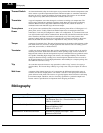
SJ300 Inverter
Appendix A
A–5
Reactance The impedance of inductors and capacitors has two components. The resistive part is constant,
while the reactive part changes with applied frequency. These devices have a complex imped-
ance (complex number), where the resistance is the real part and the reactance is the imaginary
part.
Rectifier An electronic device made of one or more diodes that converts AC power into DC power.
Rectifiers are usually used in combination with capacitors to filter (smooth) the rectified
waveform to closely approximate a pure DC voltage source.
Regenerative
Braking
A particular method of generating reverse torque to a motor, an inverter will switch internally to
allow the motor to become a generator and will either store the energy internally, deliver the
braking energy back to the main power input, or dissipate it with a resistor.
Regulation The quality of control applied to maintain a parameter of interest at a desired value. Usually
expressed as a percent (+/-) from the nominal, motor regulation usually refers to its shaft speed.
Reverse Torque The torque applied in the direction opposite to motor shaft rotation. As such, reverse torque is a
decelerating force on the motor and its external load.
Rotor The windings of a motor that rotate, being physically coupled to the motor shaft. See also
stator.
Saturation
Voltage
For a transistor semiconductor device, it is in saturation when an increase in input current no
longer results in an increase in the output current. The saturation voltage is the voltage drop
across the device. The ideal saturation voltage is zero.
Sensorless
Vector Control
A technique used in variable-frequency drives to rotate the force vector in the motor without the
use of a shaft position sensor (angular). Benefits include an increase in torque at the lowest
speed and the cost savings from the lack of a shaft position sensor.
Setpoint (SP) The setpoint is the desired value of a process variable of interest. See also Process Variable
(PV) and PID Loop.
Single-phase
Power
An AC power source consisting of Hot and Neutral wires. An Earth Ground connection usually
accompanies them. In theory, the voltage potential on Neutral stays at or near Earth Ground,
while Hot varies sinusoidally above and below Neutral. This power source is named Single
Phase to differentiate it from three-phase power sources. Some Hitachi inverters can accept
single phase input power, but they all output three-phase power to the motor. See also three-
phase.
Slip The difference between the theoretical (synchronous) speed of a motor at no load (determined
by its inverter output waveforms) and the actual speed. Some slip is essential in order to
develop torque to the load, but too much will cause excessive heat in the motor windings and/or
cause the motor to stall.
Squirrel Cage A “nick-name” for the appearance of the rotor frame assembly for an AC induction motor.
Stator The windings in a motor that are stationary and coupled to the power input of the motor. See
also rotor.
Start Frequency The output frequency that the inverter first produces as the frequency command setting
increases from zero. The start frequency is programmable, and is important to set properly for
the load, etc.
Tachometer 1. A signal generator usually attached to the motor shaft for the purpose of providing feedback
to the speed controlling device of the motor. 2. A speed-monitoring test meter that may
optically sense shaft rotation speed and display it on a readout.


















